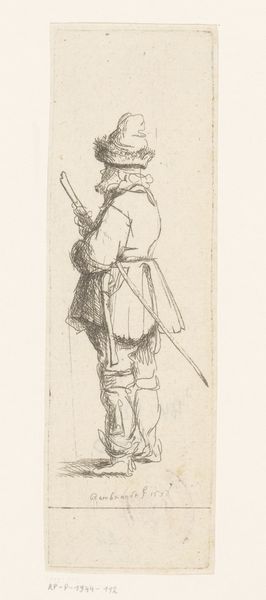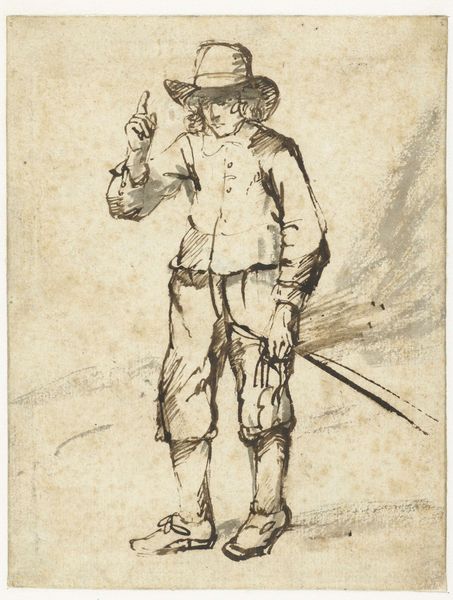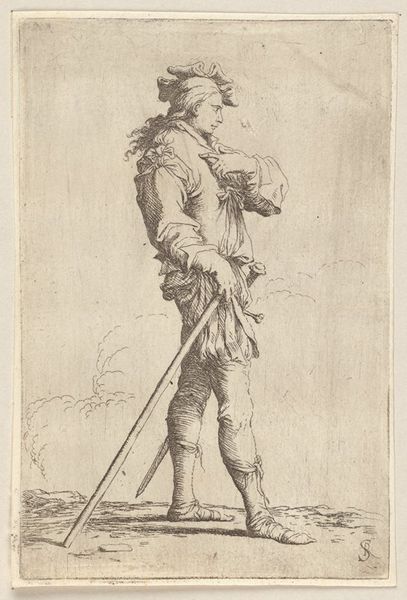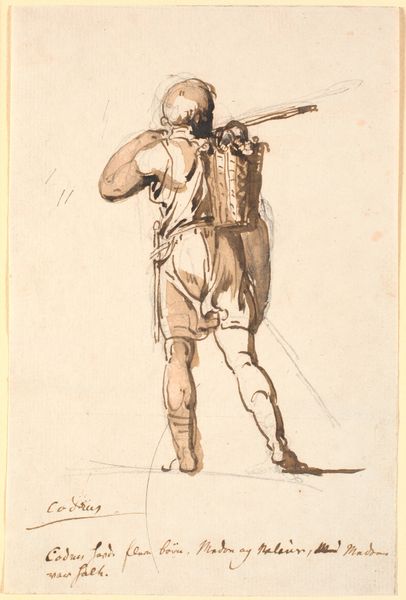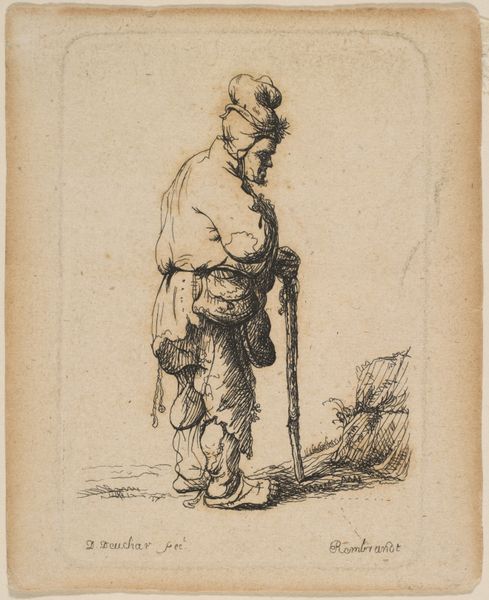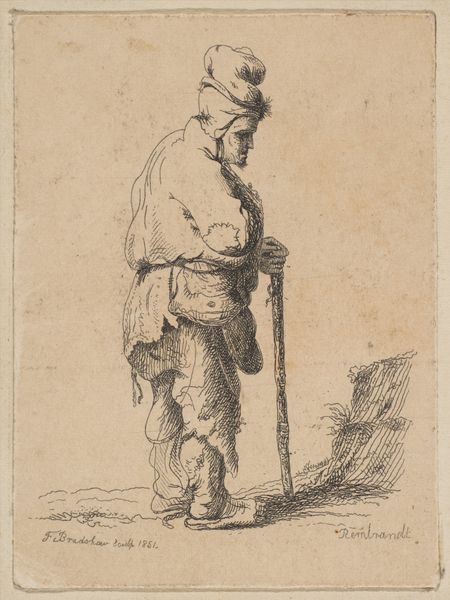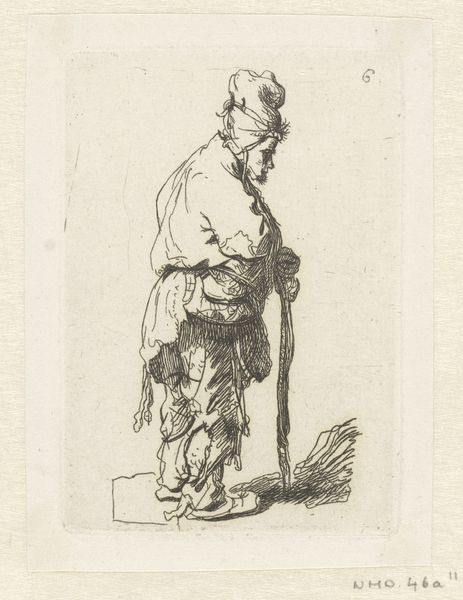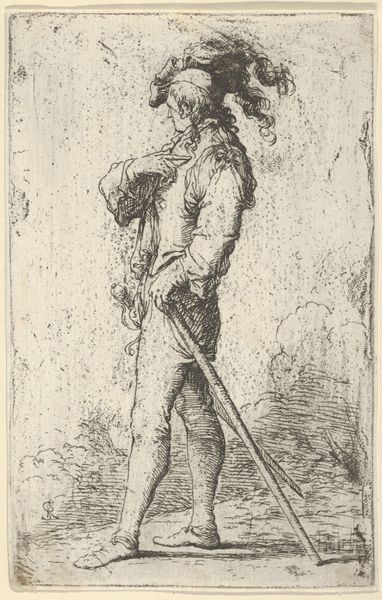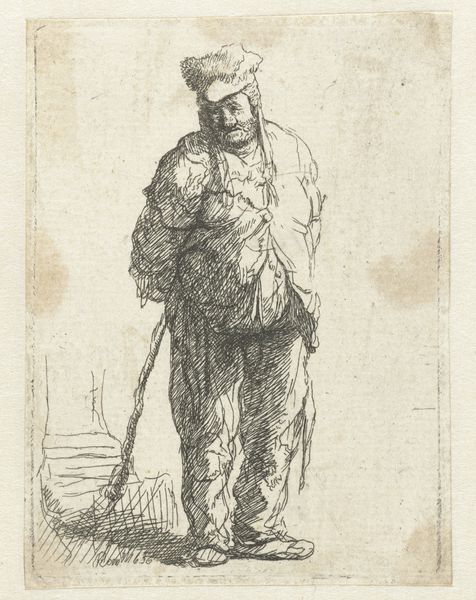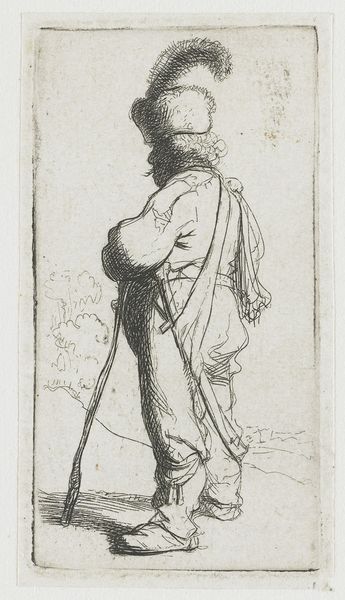
print, etching
#
portrait
#
narrative-art
#
baroque
#
dutch-golden-age
# print
#
etching
#
figuration
#
genre-painting
Dimensions: height 78 mm, width 55 mm
Copyright: Rijks Museum: Open Domain
Curator: Look at the posture in this etching, "Polander leaning on a stick." Editor: There's a melancholy stillness in that stance. His gaze seems directed towards something beyond the frame. Curator: This work is attributed to an anonymous Dutch artist and likely created after 1630. It's housed at the Rijksmuseum. Let’s explore its symbols. Editor: The figure is striking in his Otherness, isn't he? "Polander," in this context, situates him not just geographically, but also implies a cultural 'outsider,' viewed perhaps with suspicion, even in tolerant Dutch society. Curator: Precisely! That he leans on a stick signifies not only physical support but the metaphorical support needed when traversing foreign, sometimes hostile, territory. Note the elaborate feathered hat! Editor: It’s a complex symbol: is it aspiration, marking him as somehow 'above' his assumed station, or a burden that’s literally weighing him down, symbolic of performative expectations and alienation? The composition evokes a powerful tension between pride and precarity. Curator: Interesting, isn’t it, how such simple lines in this print can reveal layered psychological states! Genre painting served an essential social function then, mirroring anxieties about identity, mobility, and belonging in a world on the cusp of enormous societal transformation. Editor: Yes, and I appreciate how this piece invites viewers to grapple with how perceptions and artistic representations of otherness are shaped. We are forced to acknowledge the history, race, and politics implicit within these portraitures. Curator: Absolutely. It serves as an emotional document. I find myself pondering how we today map contemporary identity onto these enduring symbolic images. Editor: This work makes us consider how images participate in crafting histories. Seeing it helps to look both forward and back through complex sociocultural and political experiences.
Comments
No comments
Be the first to comment and join the conversation on the ultimate creative platform.
